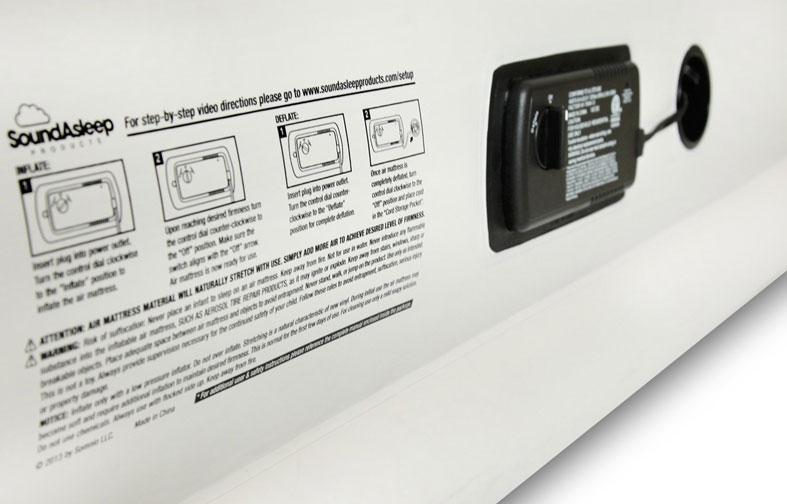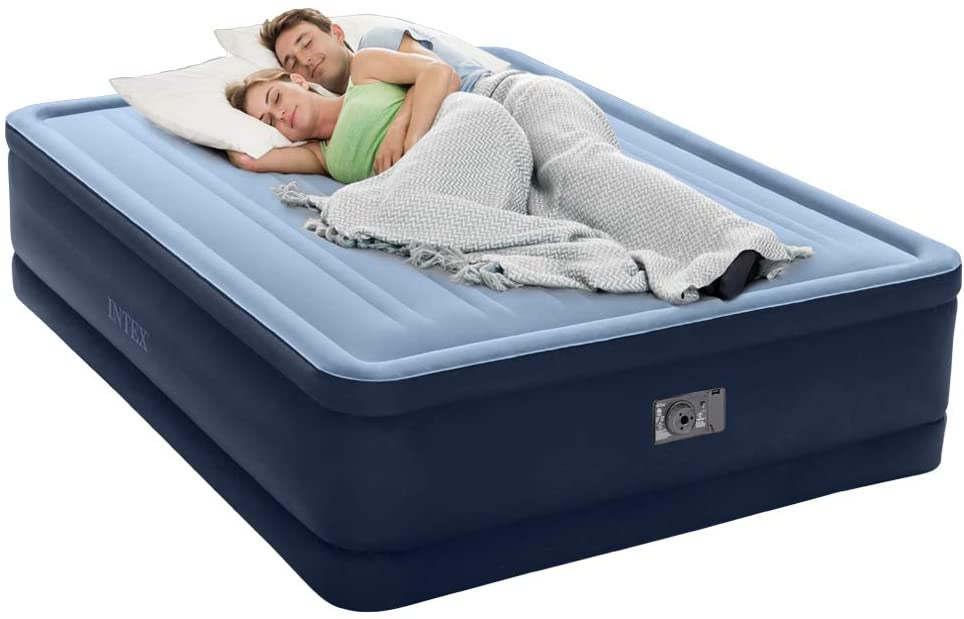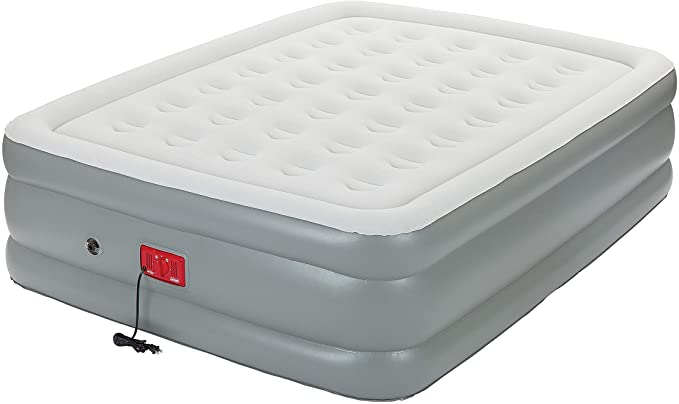Getting up in the morning and finding yourself on the floor because your air mattress burst isn’t fun. Despite the fact that they frequently deflate, inflatable air beds are among the most comfortable on the market.
Why does your blow-up bed lose air?
This could be happening to you for a variety of reasons. We’ll go over these reasons, and we’ll also give you some advice on how to keep your mattress from deflating in the first place. We’re here to assist you in regaining the peaceful slumber you’ve been missing.
Reason 1: Improper Use
You’ve had a long day and it’s time to wind down and get some sleep. Nobody wants to spend their precious leisure time poring over a lengthy instruction manual only to figure out how to properly inflate their bed. The difficulty is that if you don’t follow the instructions in the manual, your bed may not work as well as it should. Take the time to study, comprehend, and put into action the suggestions provided; they were included for a reason. You’ll be able to keep the air pressure in your inflatable bed at a stable level by doing so.
Reason 2: Temperature
During the day, the air tends to be a little warmer, while at night, it tends to be cooler. During the evening hours, as the temperature in the room begins to cool, moisture from the air inside the mattress forms. The Ideal Gas Law is to blame for this phenomenon. It was utilized by NBC Sports to see how this law impacted footballs during NFL games, but the same concept may be used to an air bed. Ten-degree temperatures for 60 minutes resulted in a drop in PSI from 13.5 PSI to 11 PSI in a Sports Science experiment. When your mattress is exposed to low temperatures at night, it loses pressure and consequently feels deflated when you wake up. While this is a pleasant and interesting truth.

Reason 3: The Pumping Predicament
After using either a manual pump or an external electric one, you should be able to disengage the pump without losing any air. Unfortunately, this is a near-impossible task, as there are currently no airtight blow-up mattresses on the market that use external pumps. Because most inflatable beds need an external pump to fill them with air, a little amount of air will be lost when the pump is removed. Fortunately, there are certain items on the market that feature built-in pumps to address this persistent issue. Pumping and maintaining such alternatives is the simplest approach. It takes between four and six minutes for them to inflate with air, making it easy to put yourself or your loved ones to sleep.
Reason 4: Holes That Leak
There is no doubt that your air mattress is not the most durable item you’ll ever buy. You can avoid the fact that these mattresses are often built from a thin material that is easily punctured, stretched, and ruptured throughout the course of their lives. If you use your bed frequently (daily or nightly), you run the risk of developing the issues listed above. It is possible to delay the inevitable depreciation of your air bed for a short period of time. There will come a time when your mattress will succumb to its flaws, but with the help of these hints, you may extend the life of your mattress.
How Long Do Air Mattresses Last?
Air mattresses that are only used once in a while can last for years before they need to be replaced. However, if the mattress is frequently used as a bed, its longevity is reduced. Before there is a leak in the mattress, it can persist for up to six months.
With regular care and maintenance, a high-quality air mattress can endure for ten to fifteen years. It’s possible that an air mattress will begin to leak as it ages. The average lifespan of an air mattress is eight years, according to the manufacturers.
Be sure to check out our air bed maintenance advice and how-tos for repairing a cold air bed if you plan to use yours for a long time. In addition, you may be interested in learning how to lift an air mattress for camping purposes.. Additionally, you may be able to extend the life of your air mattress by placing a frame under it.
Air Mattress Troubleshooting – Reasons Your Air Bed Keeps Losing Air
Air mattresses need to be cared for properly in order to endure a long time. Over-inflation can cause leaks, damage from sharp objects, punctures, and ruptures because of the materials used to construct them. For optimum firmness, you’ll need to check the inflation level on your air mattress at least once a year. Check out our guide on how to properly inflate an air mattress.
Room temperature, exceeding the mattress’s maximum weight capacity, punctures, overinflation, stretching the mattress, sitting on its edge, poor storage, and air loss from children and pets are only a few of the causes of air loss in an air bed.
Has The Mattress Been Exposed To Extreme Temperatures?
It is possible for an air mattress to lose some of its pressure if the temperature in the bedroom fluctuates too much. As the temperature drops in the room, the air in the mattress deflates, making it difficult to get comfortable in the morning. There is a greater risk of damage to the bed if the air pressure drops below the recommended level.
When your air mattress heats up, it may lose some of its pressure as well. PVC softens when the temperature is too high, causing loss of pressure in the mattress. To prevent your air mattress from losing air, check the temperature at the time you’re filling up the bed, and do your best to keep it at that degree all night.
Has The Weight Limit Of The Bed Been Exceeded?
Inflatable mattresses have a maximum weight capacity that they are built to handle. The weight capacities of twin and king-sized air beds, for example, are not same. These restrictions apply to both lying down and sitting on the mattress.
Air mattresses can lose air if they are overloaded or if the manufacturer’s weight limit is exceeded. As a result, to prevent your air mattress from losing air, be sure to read the manufacturer’s recommended maximum weight for your bed.
A typical air mattress maker will list the maximum combined weight capacity of the mattress, like this one, which can support 650 pounds for two people.

If you’re looking for a heavy-duty mattress, make sure to look into how to choose an air bed that can hold 400 pounds or more.
Is There A Hole Or Leak Somewhere?
Due to the thinness of the material used, air mattresses are prone to bursting, straining, and being punctured. To hear the sound of air escaping from your mattress, apply pressure.
In addition, minor leaks may be difficult to detect, especially if the hole is extremely small. Learn how to check an air mattress for a hole by watching this video lesson on how to remedy an air mattress leak. In addition, you may be interested in our detailed guide on repairing an air mattress leak. So don’t forget to check that out, too.
Choose a mattress with an extra thick covering and lay it out in a hazard-free place in order to minimize damage. The sturdy PVC used in the production of this air mattress ensures that it will last a long time.
Has The Air Mattress Been Over-Inflated?
When air mattresses are fully inflated, the seams are put under a great deal of stress. The first time you use your air mattress, it is recommended that you inflate it up to roughly 90% of its capacity to avoid damaging it. Overfilling a mattress increases the likelihood of a mattress rupture when pressure is applied to it.
To guarantee that your mattress performs at its best, read through the whole instruction handbook. Intex, a maker of air mattresses, provides these safety advice to help you utilize your air mattress correctly.
Have You Been Using The Air Mattress Right After Inflating It?
As soon as it’s put to use, an air mattress begins to deflate quickly. Despite the mattress’s appearance, it is simply undergoing a physical transformation.
It will take some time for its seams, cells, and other elements to fully expand and form.
For this reason, inflate the air mattress and allow it to spread out into its natural position for a couple of days before attempting to sleep on top of it.
Have You Been Sitting On Your Air Mattress?
Sitting on the edge of an air bed places a lot of pressure on a small, focused area. As a result of this, the mattress deflates more quickly. The mattress is less likely to be damaged if you lie flat on it, as your weight is well distributed.
Do Any Kids Or Pets Have Access To The Air Mattress?
Children and pets may find it difficult to resist the allure of inflated air beds. It is possible for a cat to pierce an air mattress just by stepping on it with its claws.
Air mattresses can also leak around the seams if youngsters jump on the bouncy mattress frequently. As a result, you should either keep your pets and children away from the air bed or get in a pet-friendly, puncture-proof flocked type like this.
Has The Air Mattress Been Used, Packed, and Stored Properly?
Because your mattress is filled with air, you may find that it is not as firm while you sleep. When you’re not using your air mattress, it’s ideal to keep it folded and put away until you’re ready to use it again.
To extend the life of your air mattress, be sure to fold it carefully. Inadequate folding will worsen any small holes that may already be present, resulting in increasing leakage with each subsequent use. Following the folding instructions provided in the manual and storing the mattress in a clean, safe area are the best ways to prevent this. Detailed instructions on how to fold and store an air mattress are included in this user handbook.
Consider whether there’s a better way than constantly packing and storing your air bed when you’re going camping. For additional information, see our linked post on whether or not to bring an air mattress or a camping cot when you go camping.
How Do You Keep An Air Mattress From Deflating At Night?
An air mattress is a great option for folks who are looking for a supportive mattress that will relieve pressure on their joints or back because of its fine-tunable firmness. To discover more about the advantages of sleeping on an air mattress, take a look at our article on why it’s healthy for your back. Even while there is some variation in the mattress’s hardness, this leakage will be negligible and won’t influence your overall comfort while you sleep if you utilize the mattress correctly.
Temperatures in the room should be kept close to the air temperature in the mattress to prevent deflation. Maintaining a proper level of air mattress inflation is essential to preventing damage to the mattress caused by sitting on the edge or exceeding its weight capacity. Additionally, keep children and dogs away from the air mattress to avoid punctures, and inspect the mattress for air loss.
Tip 1. Monitor the Room Temperature
Nighttime room temperatures tend to be lower than daytime temperatures. This means that your mattress will deflate and stretch out of shape as a result of the shrinking of the mattress’s air. Maintaining a consistent temperature in your room will help avoid this from happening. Firmness will be maintained throughout the night with this method Amazon has an air temperature meter that can help you assess if the room temperature is cooling down so that you can regulate the firmness of your air mattress.
Tip 2. Do Not Over-exceed the Maximum Weight Capacity of the Mattress
Weight constraints should be taken into account while buying for any piece of furniture in order to get the most out of it. Air mattresses are the same. Inflatable mattresses have a certain weight capacity that must not be exceeded. Your air mattress will sink, leak, or burst its seals if this capacity is surpassed.
To ensure that you’re utilizing a mattress that can support the weight of the people who will be using it, contact the manufacturer or check the user manual.
An air bed may be able to accommodate more than one person depending on its size. There are two equal portions of the bed that have the same weight restriction. In some cases, the bed can only hold 175 pounds per side of the bed and cannot accommodate a single sleeper weighing 350 pounds, even though the bed is built to hold two people.

Tip 3. Pay Attention to Any Forms of Air Loss
A puncture is the most obvious cause for an air mattress to lose air. Find the source of any holes, rips, or tears. Also, inspect the seams. To find a leak, you can feel for it, hear escaping air, or rub a soapy sponge down the surface, looking for bubbles that appear at the leak’s location.
The valves and defective pumps are two of the most typical causes of leakage. The puncture must be patched or sealed appropriately, or the leaking valve must be fixed correctly, or a replacement valve must be ordered. In order to fix air mattress leaks, you can refer to our page on the subject.
Tip 4. Do Not Over Inflate the Mattress
When an air mattress is fully inflated, the seams are put under a lot of strain. As a result, you should inflate your mattress to around 90% capacity. Be careful not to over-inflate the mattress in order to preserve its peak performance.
It’s preferable to go with a mattress like this one that has a built-in pump to reduce the risk of damage and deflation. In order to securely inflate an air mattress, follow the directions in this user manual for a Coleman air bed with a built-in pump.

Tip 5. Allow the Air Mattress Materials to Stretch Out
To get the most out of your new air mattress, you’ll need to let the seams, cells, and other parts of the mattress decompress for a while. Make sure your air mattress is inflated for at least 48 hours before placing any weight on it. When the PVC expands, it provides a more supportive sleeping surface.
Tip 6. Avoid Sitting on the Edge of the Air Mattress
Avoid sitting on the edge of your air mattress for long periods of time as a simple technique to keep the air in your mattress. To achieve an even distribution of weight across the surface of your inflatable mattress, avoid applying undue pressure on any one part of the mattress.
Tip 7. Keep the Air Mattress Away From Kids and Pets
Sharp items, a pet’s claws, or children playing on your bouncy air bed can all leave holes in your air mattress. Avoid having pets or children play with or near your air bed by securing your bedroom door or packing it up and putting it away when not in use.
It’s important to keep waterbeds and airbeds far enough away from furniture with sharp corners and splinters to avoid puncturing them with sharp nails or other foreign items. You may learn more about the upkeep necessary for these kinds of changeable sleeping surfaces by reading our article on the differences between air beds and waterbeds.
Tip 8. Fold and Store the Air Mattress Properly With Care
Deflating the air bed after each use ensures that the mattress is completely devoid of air. Carefully roll up the mattress after it’s been deflated and store it in the storage bag or box it arrived in. In the long run, the stretching of the bed’s fabric while folding will increase the likelihood of tears developing over time. To ensure that your air mattress lasts as long as possible, follow the folding instructions included in the user handbook. When not in use, the included storage bag keeps the air mattress free of dust and damage.
What do you think of this article?

![Top Rated CPAP Machine Buyer’s Guide [current_date format=’m/Y’]](https://bestpillowsleepers.com/wp-content/uploads/2023/03/best-cpap-machine-img_6405d72310053-400x300.jpg)
![The 11 Best Cooling Weighted Blankets [current_date format=’m/Y’]](https://bestpillowsleepers.com/wp-content/uploads/2023/01/best-cooling-weighted-blankets-img_63d4ff15c615d-400x300.jpg)
![Ultimate Guide to Choosing a Best Cooling Mattress Pads [current_date format=’m/Y’]](https://bestpillowsleepers.com/wp-content/uploads/2023/01/best-cooling-mattress-pads-img_63c403115126b-400x300.jpg)
![Ultimate Guide to Choosing a Best Cooling Mattress [current_date format=’m/Y’]](https://bestpillowsleepers.com/wp-content/uploads/2023/01/ultimate-guide-to-choosing-a-best-cooling-mattress-img_63bcdba870d77-400x300.jpg)
![Ultimate Guide to Choosing a Best Cooling Comforters [current_date format=’m/Y’]](https://bestpillowsleepers.com/wp-content/uploads/2023/01/ultimate-guide-to-choosing-a-best-cooling-comforters-img_63bba2f5cd3ce-400x300.jpg)